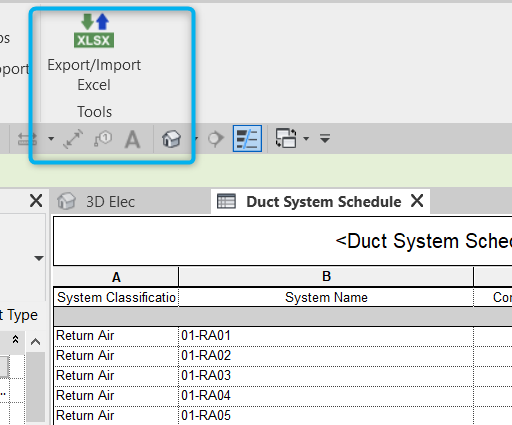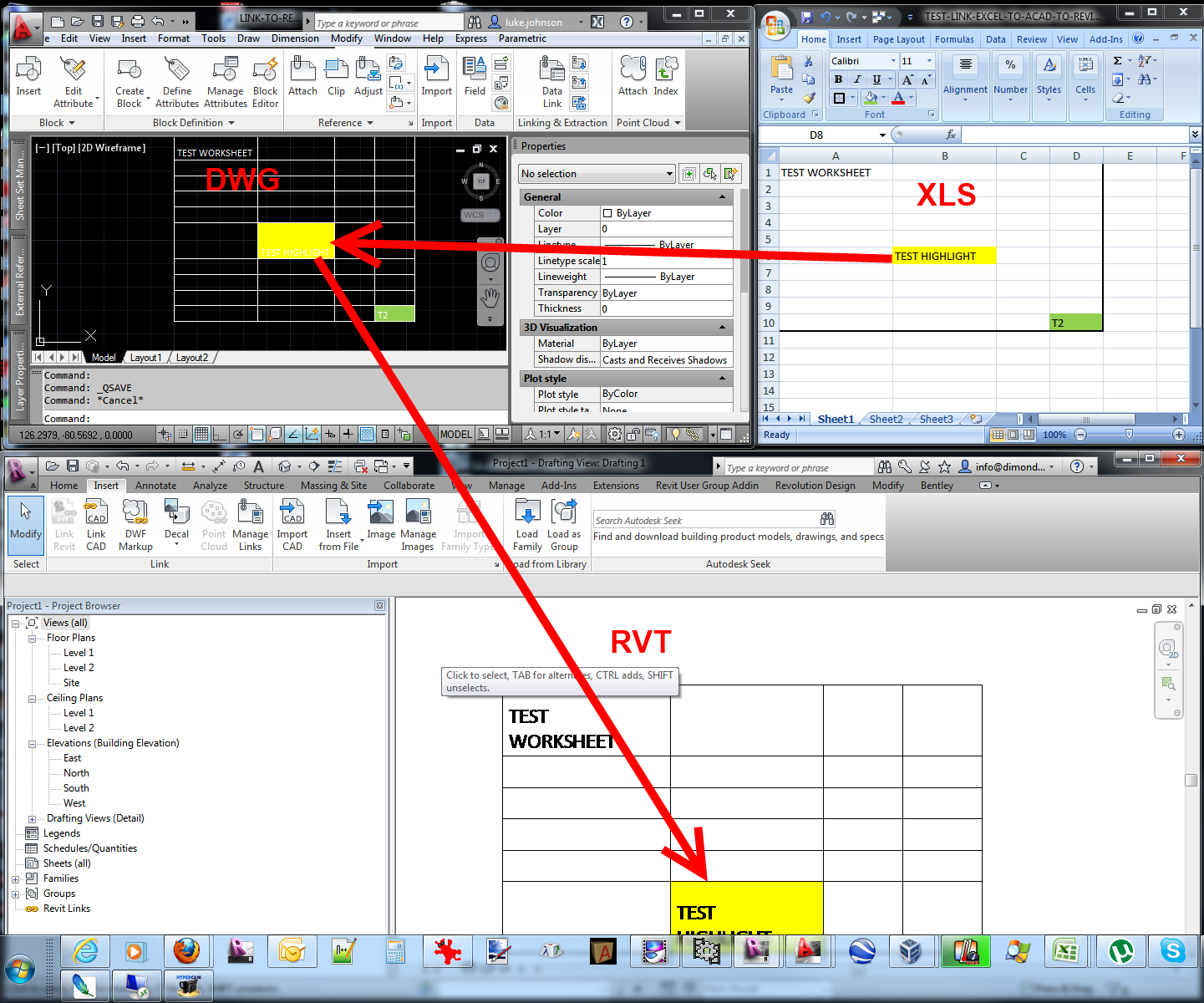Import Excel into Revit Seamlessly: A How-To Overview
Wiki Article
Damaging Barriers: Excel Importation Techniques for Advanced Revit Users
Check out numerous data importation approaches and master Excel integration to boost your Revit modeling capabilities. With our pointers and tricks, you can overcome importation difficulties and come to be a true specialist in utilizing Excel for your Revit jobs.Advanced Revit Users: Leveraging Excel for Importation
You can conveniently take advantage of Excel for importation as a sophisticated Revit customer. Excel is a powerful tool that can greatly improve your operations and efficiency in Revit. With its capability to manage huge amounts of data and execute complex computations, Excel can be a valuable asset in managing and organizing your project info.One means to leverage Excel for importation is by utilizing the "Web link Excel" attribute in Revit. This attribute allows you to link an Excel spreadsheet directly into your Revit job, allowing you to upgrade and integrate information between the two programs. When dealing with routines or tracking changes in your job., this can be especially useful.
Another way to make use of Excel is by utilizing the "Import/Export" feature in Revit. This feature allows you to import and export data between Revit and Excel, giving you the versatility to function with information in both programs. You can import information from Excel right into Revit to produce aspects such as doors, rooms, or wall surfaces, and you can likewise export data from Revit to Excel for further analysis or reporting.

Exploring Data Importation Methods in Revit Using Excel
Exploring how to import data from Excel into Revit provides efficient methods for integrating details. When you import information from Excel, you can flawlessly move information such as space routines, product listings, and equipment information right into your Revit job. This process allows you to save effort and time by avoiding manual information access.To import information from Excel into Revit, you can utilize the "Import/Export" attribute. This attribute enables you to map the Excel data areas to the corresponding Revit parameters, ensuring that the details is appropriately designated within the model. By picking the proper import choices, you can control exactly how the data is imported and just how it connects with your job.
One more method for importing information from Excel right into Revit is by utilizing Eager beaver. With Dynamo, you can produce personalized scripts that import data from Excel and adjust it within your Revit job.
Mastering Excel Combination for Advanced Revit Modeling
Mastering Excel combination for innovative Revit modeling involves using effective approaches to perfectly move data and automate jobs within your task. By utilizing the power of Excel, you can boost your Revit modeling workflow and save useful time. One vital technique is importing data from Excel spreadsheets directly right into your Revit version. This allows you to populate specifications, such as room names or material quantities, easily. With a few simple steps, you can map the Excel columns to the matching Revit criteria and import the information precisely.An additional beneficial approach is exporting data from Revit to Excel. This allows you to remove info from your version, such as schedules or material quantities, and evaluate it in Excel utilizing solutions, graphes, or various other powerful tools. By leveraging the abilities of Excel, you can carry out complicated computations, produce personalized reports, and gain important insights into your project.
Along with information transfer, Excel assimilation can automate recurring jobs in Revit. By producing macros or scripts in Excel, you can automate processes like creating views, generating sheets, or using typical family members - revit tool. This not only saves time but also guarantees consistency throughout your job
To grasp Excel integration in Revit, it is crucial to recognize the information structure and how Revit communicates with Excel. By familiarizing on your own with the offered tools and strategies, you can open the full possibility of Excel combination and take your Revit modeling to the next degree.
Conquering Importation Difficulties: Excel Techniques for Revit Experts
When overcoming importation difficulties, it is necessary to be accustomed to effective Excel techniques that can profit professionals in Revit. As an innovative Revit customer, you comprehend the importance of flawlessly importing data from Excel right into your projects. Nonetheless, you may encounter different challenges along the road. By utilizing effective Excel strategies, you can conquer these obstacles and enhance your productivity.
An additional useful method is utilizing the "Transpose" feature in Excel. This allows you to transform data from rows to columns or the other way around. When importing data right into Revit, this can be specifically useful when you have information in an upright layout in Excel, but you need it to be in a straight format in Revit.
Additionally, utilizing Excel formulas such as VLOOKUP and INDEX-MATCH can greatly help in mapping information from Excel to Revit. These solutions permit you to search for specific values in Excel and obtain equivalent information from an additional column. This can conserve you time and effort when importing large datasets into Revit.
Excel Information Importation Idea for Advanced Revit Users
By acquainting on your own with effective Excel methods and suggestions, you can boost your information importation process as an innovative user of Revit. Excel is a powerful device that can greatly assist in the importation of information into Revit, saving you time and raising your efficiency. One valuable pointer is to use the "Text to Columns" attribute in Excel to separate data into various columns based upon a delimiter. This can be particularly handy when you have information in a single column that needs to be divided right into multiple columns in Revit. Additionally, using Excel's "Paste Special" function enables you to paste information from Excel right into Revit while keeping formatting, such as cell color or font style. This can be especially beneficial when importing information that requires particular formatting in Revit. An additional helpful trick is to utilize Excel's "Change and discover" feature to swiftly make modifications to your information before importing it into Revit. You can quickly replace specific text or characters with others, revit add ins saving you the time and effort of by hand editing and enhancing the information in Revit. By using these Excel tricks and tips, you can simplify your information importation procedure and come to be a lot more skillful in utilizing Revit.
Conclusion
You have actually now found out important strategies for importing data from Excel right into Revit as a sophisticated individual. By leveraging the power of Excel combination, you can improve your modeling procedure and get rid of any importation tests that might occur. With these tricks and suggestions, you will certainly be able to grasp data importation and boost your Revit skills. Go in advance, damage those barriers and stand out in your Revit tasks!
When importing information right into Revit, this can be particularly practical when you have information in a vertical format in Excel, however you require it to be in a straight format in Revit.
Additionally, using Excel solutions such as VLOOKUP and INDEX-MATCH can significantly help in mapping information from Excel to Revit. In addition, making use of Excel's "Paste Special" feature enables you to paste data from Excel into Revit while preserving format, such as cell shade or font design.
Report this wiki page